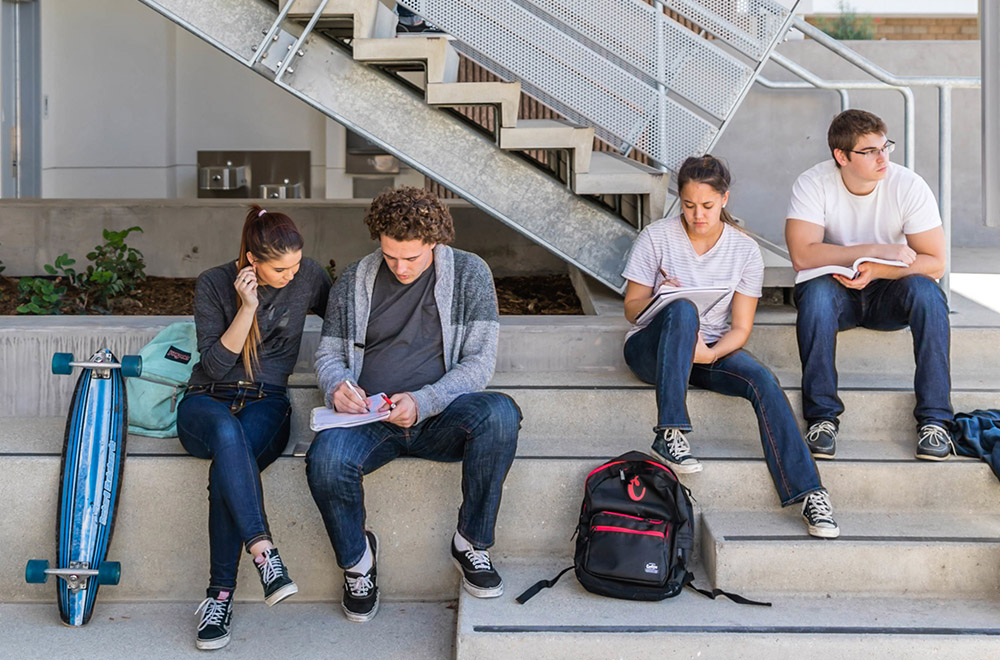We recently finished photography of the Orchard School Library in San Jose and we’re thrilled to share it with all of you. The library opened this fall and has generated a lot of excitement on the campus and the client couldn’t be more pleased. While the project was based in HMC’s San Jose studio, it engaged team members from several offices throughout the firm. Read the full project narrative below to learn more about what makes it such a success. (Photos by David Wakely)
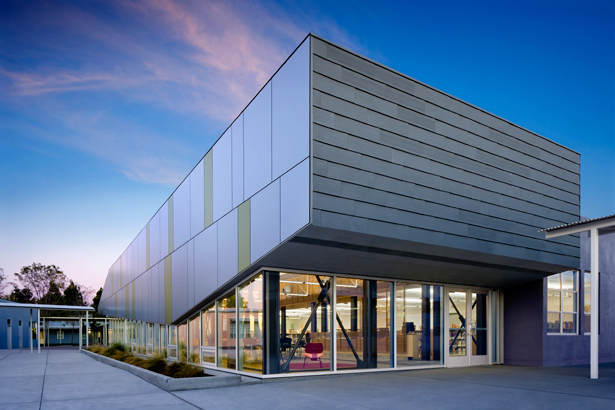
Principal in Charge: Susie Lechner
Project Designer: David Maglaty
Project Manager: Katia McClain
Interior Architect: Jim Woolum
Project Leader: Julia Kim
Technical Leader: Andrew Chien
Construction Administration: Alex Seefeldt
Interior Design and Furniture: Olivia Graf Doyle and Sepi Salehirad
Quick Facts
3,000-SF Renovation + 3,000-SF Addition
Elementary and Middle School Library
LEED Gold Registered
Imagine the Possibilities: How a small public school library challenged convention to unite a campus and inspire academic success
Numerous studies have shown that elementary and middle school students who have access to and regularly use libraries achieve higher test scores than those students who don’t. With this in mind, officials at Orchard School—an elementary and middle school campus in northeastern San Jose—sought to improve their outdated and overcrowded campus library, with the goals of housing their growing book collection, improving student access to technology, and creating a central focus for the school. The completed project resulted in an eye-catching library that enlivens the campus, creating a destination that attracts both students and teachers.
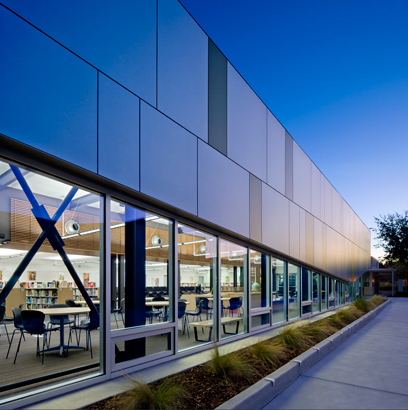
Dating back to the 1850s, Orchard School is one of the oldest operating schools in Northern California. Its library, located at the heart of the campus, connects the elementary and middle school areas. Because of that ideal central location, a renovation and expansion of the 3,000-SF space made more sense than new construction elsewhere. Using the centralized location to advantage, the design team planned for opposing elementary and middle school entries to the library, thus defining a spatial organization that acknowledges the distinct identity of each group.

With its location tucked between stucco-clad, flat roofed 1990s-era buildings, designers and school officials knew they needed to distinguish the library from its surroundings. The expanded and renovated library responds to this challenge through the use of a metallic composite-panel façade with zinc plate accents and abundant glass, giving the library a striking aesthetic reflective of its position in the heart of Silicon Valley. The angular, sloping windows emphasize the building entries and focus interior vistas obliquely toward view corridors. They taper the building’s scale in response to its smaller users, and effectively block the unattractive view of an adjacent building’s blank rear wall and mechanical equipment, yet maintain a continuous sense of connection with the landscaped plaza outside.
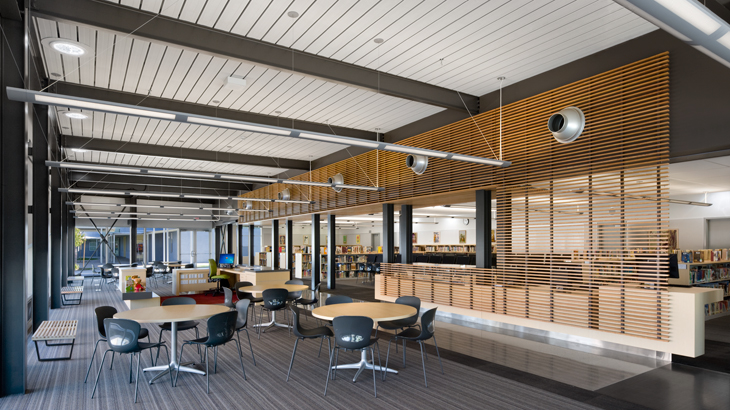
Inside, the dramatic full-height glass brings natural light deep into the expanded 6,000-SF space, a drastic departure from the obstructed views of its predecessor. A natural wood screen, locally crafted from FSC-certified wood, helps to define space and provide boundaries without compromising supervision. With the circulation desk installed in the center of the space, librarians are now able to survey students while greeting anyone coming and going. Dark existing instructional spaces for elementary and middle school classes were relocated to corners filled with natural north light; the renovated existing space, with no access to windows, now houses stacks for the 18,000-volume collection, along with a new technology lab for up to 36 students.
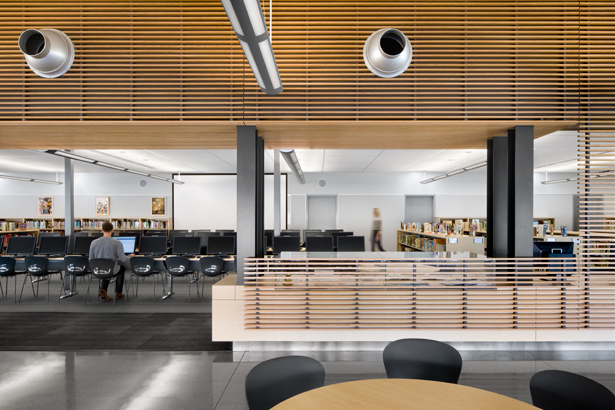
The library has been hugely successful in creating a focal point for this rambling campus, providing new instructional opportunities, and attracting student, staff, and community users; as a bonus, its natural light and spatial quality have made it the most popular spot on campus for after-school faculty meetings and training sessions.
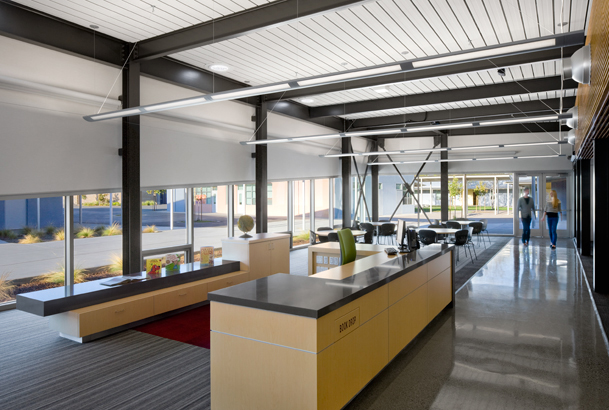
The Orchard library is currently registered with the United States Green Building Council for LEED Gold certification. It achieves this level of sustainable design through the use of a high-performance exterior building envelope, interior day lighting, natural ventilation, photovoltaic panels, upgraded mechanical systems, green-certified interior furnishings and finishes, water-saving plumbing fixtures, and careful siting and orientation to reduce solar heat gain.
